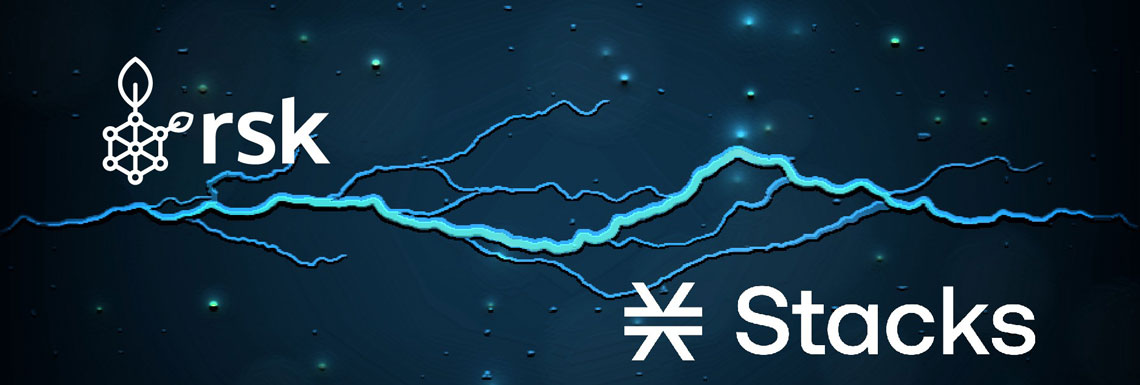
Since the day Satoshi mentioned the possibility of merged mining in 2010, several techniques have been devised to take advantage of the Bitcoin hashrate to secure a sidechain or a remorachain. In this article ...

Taproot is the the second of set of exciting improvements that are coming to Bitcoin. First it was segwit, now taproot, and someday we’ll see the activation of covenants, drivechains and coinwitness. However ...

The Bitcoin community welcomes Bitcoin sidechains because they are increasing Bitcoin’s utility now and probably they will do even more in the future. The Rootstock sidechain was specially designed to provide incentives ...

Verifiable Delay Functions (VDFs henceforth) are a cryptographic primitive that allows a prover to show a verifier that a certain amount of time running a function was spent, and do it in a way that the verifier can ...

In this article I analyze the Stacks blockchain and compare it with Rootstock, especially on their origins and consensus protocols. To keep this article as short as possible, other platforms’ features, such their ecosystems ...

Quantum computing will have a big impact on our lives: drug development, traffic optimization, artificial intelligence or weather forecasting will benefit from the power increase that a quantum computer will bring with it ...

In this post I talk about what is a Bitcoin sidechain and why they have a key role in the cryptocurrency Ecosystem. Let’s start by briefly reviewing the history of sidechains. The first attempt to build a sidechain dates back to 2012 ...

Most web and mobile applications rely on cloud-storage solutions. Storage costs charged to developers and enterprises are determined using tiered-pricing schemes that depend on several factors e.g. amount of data stored, duration, bandwidth ...

Second layer protocols are scalability or privacy enhancements that reduce the amount of transactions published on a given blockchain, while still relying on the consensus algorithm of the parent chain to achieve certain security guarantees ...

The Iris network upgrade is coming to Rootstock in the near future. The Rootstock IPs that will be included have been discussed by the Rootstock community and, apart from one RSKIP whose addition still depends on code readiness, no further change will occur ...

With the advent of DeFi, several fiat-pegged tokens have become a preferred means of payment and savings for both users and miners. Most blockchains rely on a single native token to pay for transaction fees. This results in ...

The Rootstock project started as a fork of an Ethereum codebase in 2016 and it was developed for 2 years until it was finally launched in 2018. During those years, crucial data structures were upgraded, and precompiled contracts and new opcodes were added ...

Rootstock’s 2-way peg protocol, called “the Powpeg”, has matured from its inception in 2018 as a federation to now include many decentralized qualities. The new Rootstock Powpeg protects private keys stored in special purpose PowHSMs based on tamper-proof secure elements (SE) ...

Rootstock’s 2-way peg protocol, called “the Powpeg”, has matured from its inception in 2018 as a federation to now include many decentralized qualities. The new Rootstock Powpeg protects private keys stored in special purpose PowHSMs based on tamper-proof secure elements (SE)....

Many decentralized applications require the generation of random numbers with a certain amount of entropy. This requirement occurs in simple lotteries and in complex smart-contracts that verify proofs interactively using challenge-response protocols...

Most blockchains have a preferred cryptocurrency to pay for transaction fees. This simple design has many benefits. First, to bootstrap an economy, the native token model creates an initial demand for a new token. Second, it ...

In this article we argue that the 1/64 CALL gas reduction in EIP150 is problematic and we suggest Ethereum 2.0 should revert this change. That’s why Rootstock ...

In the United States, my bank charges $3 for an electronic funds transfer to someone else’s account, a process that takes 2-3 business days. Next day ...





